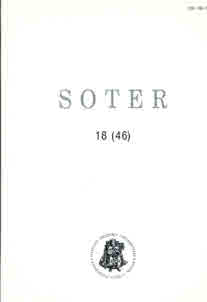Tiesos ir tolerancijos santykis, tiesai nustatant tolerancijos ribas
Relation of truth and tolerance, when the truth assigns the limits of tolerance
Author(s): Vytautė MaciukaitėSubject(s): Christian Theology and Religion
Published by: Vytauto Didžiojo Universitetas
Keywords: tiesa; tolerancija; subjektyvumas; reliatyvumas; ontologija; pažinimas; moralė; teisingumas; induizmas; krikščionybė; truth; toleration; subjectivity; relativity; ontology; cognition; moral; right; induism; Christianity;
Summary/Abstract: Subject: Relation of truth and tolerance, when the truth, as conformity of subject and intellect, which has evidence in practice, assigns the limits of tolerance. Target: to determine the limits of tolerance in reaction to the addiction of post-modern man to make the tolerance absolute. Subject relevance: The truth and the tolerance are not only two important subjects of philosophy and moral theology, but also two actual latter-day problems. Intolerance is a very old problem, and making tolerance absolut, when tolerance is converted from the tool to the subject, to reach the truth in this matter is quite a new thing. Topic: Essentially tolerance is in itself a part of freedom problem, however I did not want to restrict my research only within the argument about the horizontal conception of tolerance (tolerance, which displays in the relationship between people). I have tried to look for ontological substantiation of tolerance in the truth. Aiming to talk about tolerance, first of all, it is necessary to understand, what the truth is and if it exists at all. I have grouped the truth into 3 truth-defining parts like: ontological, cognitive and moral definitions. Thus the truth became similar to the universal triangle. The basis of this triangle is God and the top is the action of the human being; it shows the existence of natural non conformance between different levels of given reality. It is impossible to tolerate truths, which are not expressed in practice in any way; therefore the tolerance is connected only to moral truth, which I have grouped into the truth of word and the truth of action. In this part I have raised the questions about existence of objective norms of morality and moral relativism; I have analyzed the difference between lie and mistake. Before implementing the truth into practice it is important to know the truth, therefore I have reviewed understanding of knowledge of the truth, relativity of the truth and the subjectivity problems of the truth. Following the classical definition of truth, the truth is conformity of subject and of intellect; therefore at first it was necessary to ask whether it was truth what conforms intellect. For this purpose I have compared two most typical representatives of different philosophical school-trends – St. Thomas Aquinas and A. Schopenhauer, who respectively refer their thoughts to Christian and Hindu philosophical tradition. The essence of the philosophy of tomistic realism is that reality is considered as a real and the truth is expressed through it. Our mind is able to know reality as it is in itself and to find the truth. The truth is based on God. Perceptual philosophy, similar to the idea of the reality in Hinduism, considers reality as an illusion and deception, which is needed to turn away from. The variety of these realities is ignored by erasing limits between different things. According to the Western meaning the truth is understood as substantiating tolerance.
Journal: SOTER: religijos mokslo žurnalas
- Issue Year: 47/2006
- Issue No: 19
- Page Range: 27-47
- Page Count: 21
- Language: Lithuanian

